Average Condo Sale in Manhattan Reaches $2.9M, Setting New Record
For the second quarter in a row, average condo sales prices in Manhattan are breaking records. The first three months of 2016 saw $4.59 billion in aggregate sales, breaking the previous record of $4.57 billion that was set last quarter, according to data from CityRealty. The average sales price topped out at $2.9 million, also significantly higher than last quarter’s $2.5 million. These figures aren’t surprising considering 24 percent of all condo sales during the beginning of this year were at or above $10 million, with new luxury developments like 432 Park Avenue, The Greenwich Lane, and 150 Charles Street accounting for the uptick.
Ian Schrager Carves Up $80M Penthouse at 160 Leroy Into Two Units
Call it the (overpriced) penthouse effect.
After shooting for the stars with an $80 million penthouse at 160 Leroy Street, Ian Schrager is the latest developer to fall back to Earth with two smaller and less expensive units.
The Studio 54 co-founder – apparently taking a page from projects like 432 Park Avenue and 10 Sullivan Street – has divided what would have been a 12,200-square-foot spread at his curvy ultra-luxe West Village condominium into two units measuring approximately 7,700 square feet and 4,800 square feet, according to filings with the New York State Attorney General. The smaller apartments have price tags to match: $48.5 million and $29.5 million, respectively.
“We thought it would be better for the marketplace; it’s what people were asking for,” said Howard Lorber, president and CEO of Vector Group Ltd., whose New Valley subsidiary is an investor in the project along with the Witkoff Group and Ares Real Estate.
“Buyers said, ‘We love the top floor, but we don’t want to spend $80 million,’” said Lorber, who is also chairman of Douglas Elliman, which is handling sales at 160 Leroy. “So we figured we’d give them what they want.”
The $80 million penthouse at the Herzog & de Meuron-designed project isn’t the only unit the developers retooled.
They’ve also altered the building’s unit mix to include 56 apartments instead of 48, according to an amendment filed with the AG in February and obtained by The Real Deal. In doing so, the developers carved out several smaller units, replacing larger (and pricier) ones.
Five planned penthouses – the smallest of which measured 6,100 square feet and was asking $24.5 million — have been replaced by eight smaller apartments, the amended plans show. The smallest of the eight pads measures 3,562 square feet and is listed for $13.75 million, according to AG filings.
Lorber said the developers’ decision was in response to buyer demand for slightly smaller condos, which are selling at a brisk pace. “The market is strong,” he said. “The main reason was to create some [more units like] a line that had sold out.”
In an interview with Bloomberg last month, the hotelier and developer said he was “mindful but not worried” about the luxury condo slowdown.
“If you have a really great product, it sells irrespective of the time on the market,” Schrager said. “Apple comes out with a product — it sells. People don’t even know they need a new iPhone or iPad. It still sells because it’s so well-executed and that’s what we’re trying to accomplish.”
Schrager obtained a $265 million construction loan for the project in February and said in mid-April that the building was more than 60 percent sold. Schrager himself is a buyer there, having scooped up a 12th-floor apartment for about $15 million earlier this year.
The developers of 160 Leroy are not alone in carving out multiple units from large apartments amidst a waning luxury market.
Last year, CIM Group and Macklowe Properties divided the full-floor units on five floors at 432 Park. And in February, Madison Equities and Property Markets Group’s chopped the $45 million triplex penthouse at 10 Sullivan Street into two units asking $11 million and $29.5 million.
A TRD analysis of StreetEasy data in April found that 35 percent of penthouses on the market have seen price chops
New Sales Listing - 125 Ashland Place, Unit 9C
One-Bedroom
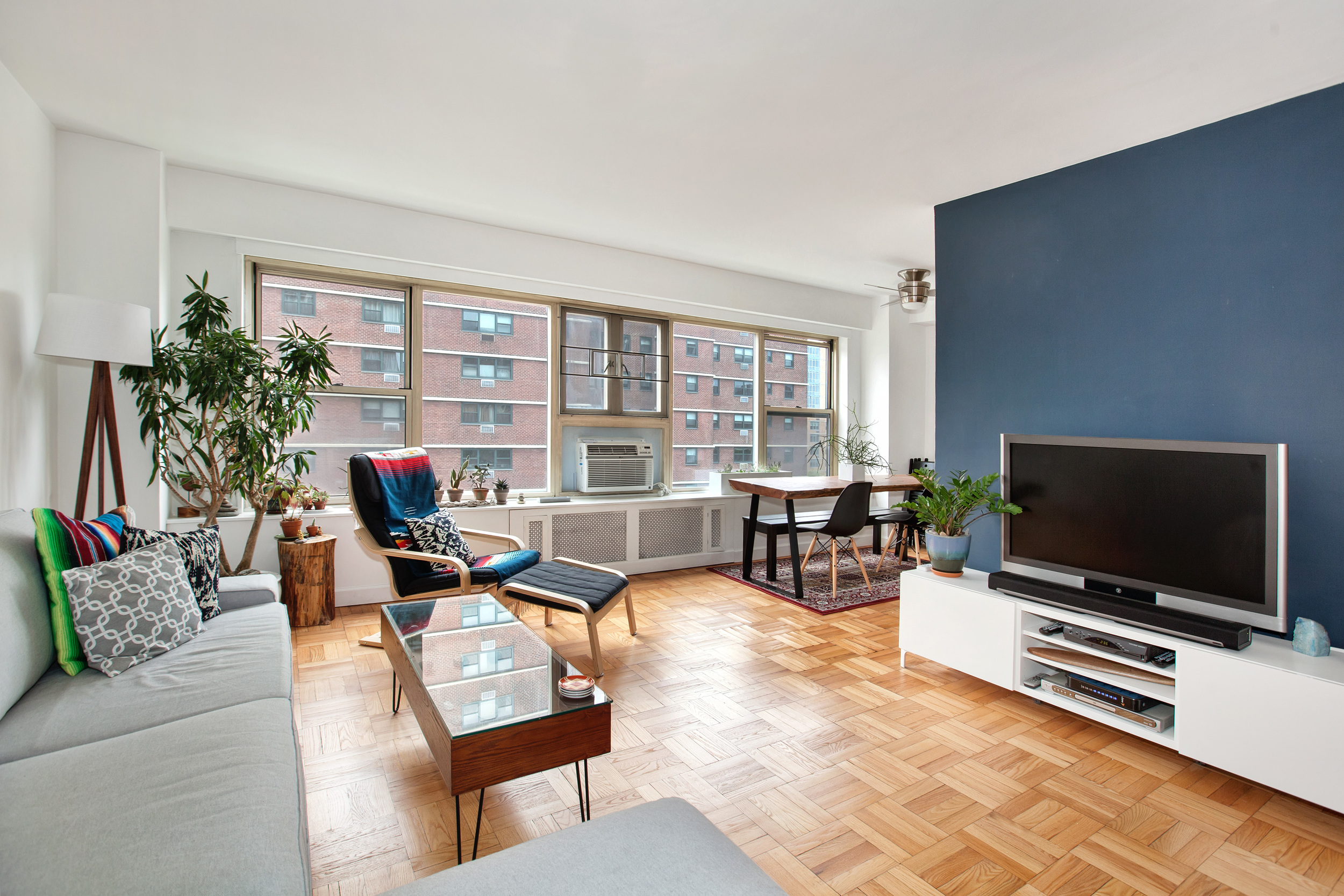
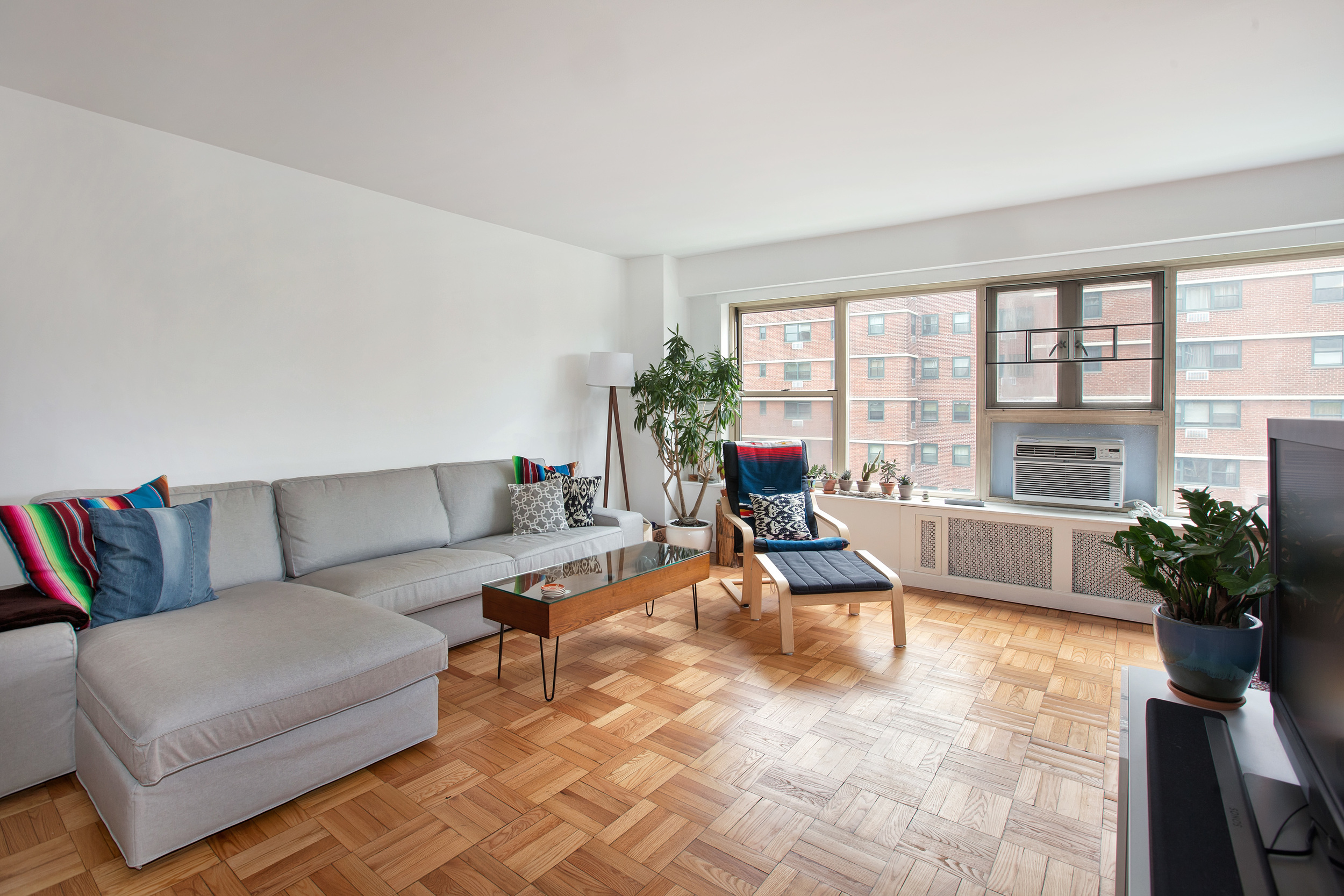

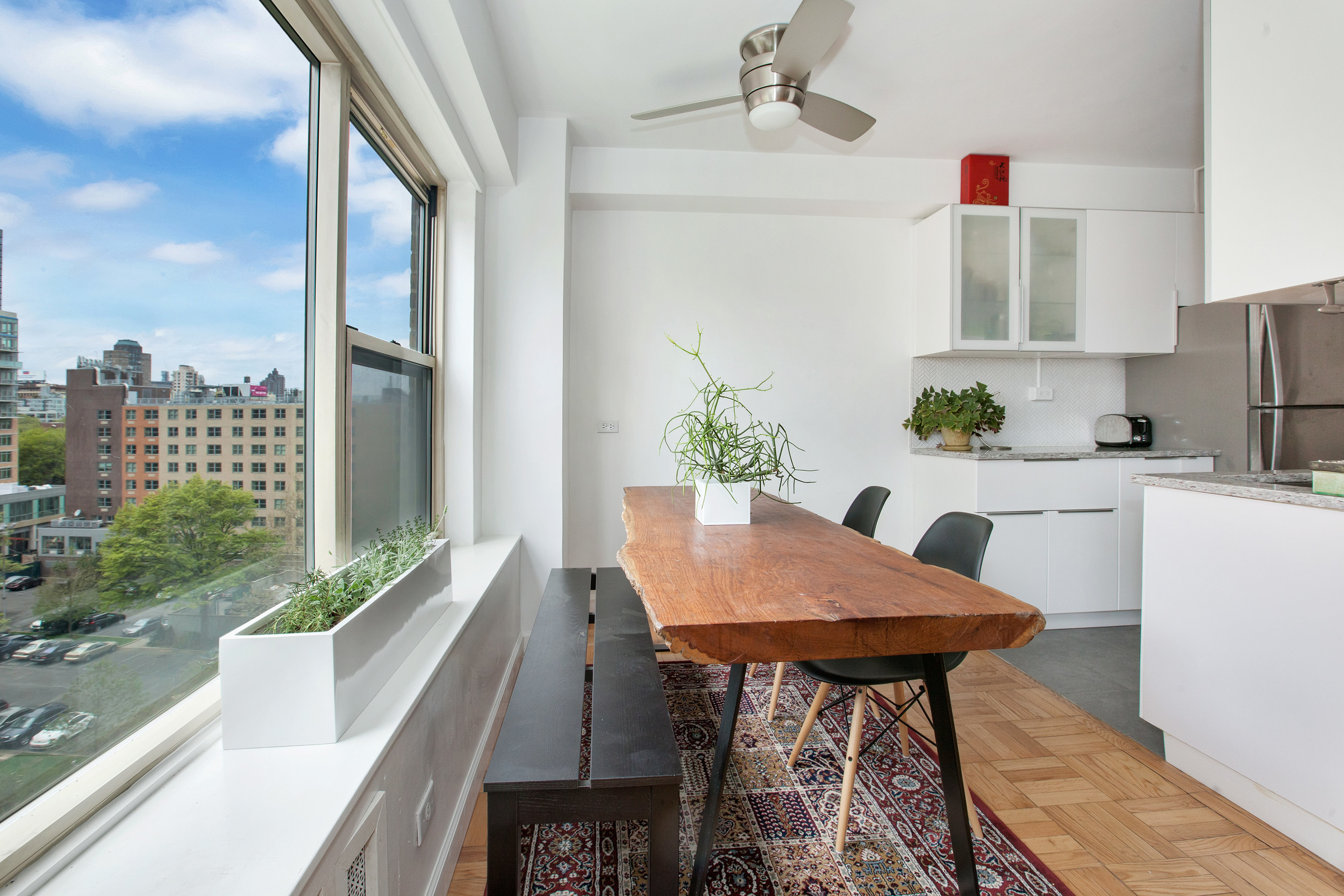

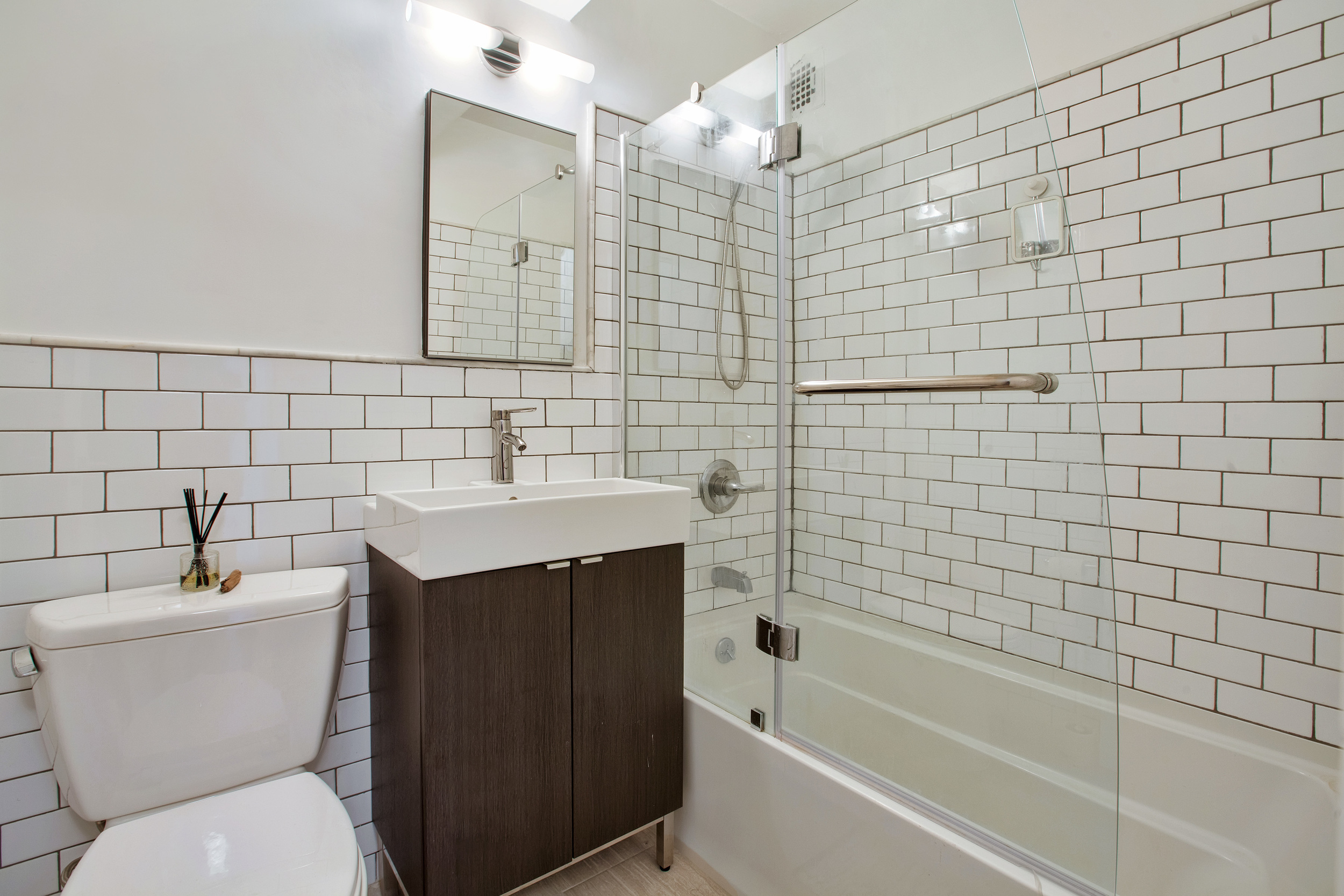

One-Bathroom
$485,000
Spacious newly renovated one-bedroom corner unit has a wall of oversized-windows and dining alcove. The living and dinging room are sun-filled all day long with an excellent open view. Newly renovated this unit, is in excellent, move-in condition. The custom galley kitchen features beautiful granite counters and custom backsplash, with modern glass cabinetry and stainless steal appliances. This kitchen is both beautiful and highly functional. The brand new bathroom has subway tiles as well as a glass enclosed shower. The oversized corner bedroom can easily fit a king sized bed, both the bedroom and throughout the apartment there is an abundance of closet and storage space with two huge walk-in closets. Maintenance includes all utilities (heat, hot water, electric and gas)!
Kingsview Homes is a peaceful gated community with parking, 24-hour private security service, central laundry room per building, storage, playground and beautiful, serene landscaped gardens.Conveniently located, this complex is just steps to exciting amenities and attractions this area has to offer such as: Ft. Greene park, BAM, Barclays Center, Atlantic mall, international cuisine and shopping. Public transportation is just a stone-throw away with trains 2,3,4,5,A,C,D,E,J,M,Q,B,R,N. THIS COOP HAS A NO PET POLICY.
Record-Breaking Subway Ridership Numbers May Pose Safety Concerns
The recent increase in subway ridership has raised several challenging questions for both commuters and the Metropolitan Transportation Authority (MTA) alike, and the New York Times has now taken a closer look at some of these issues in a new report about the congestion.
With close to 1.8 billion rides per year, subway ridership is now the highest its been since 1948. The last time the subway system was confronted by such a glut of passengers was during the Great Depression and subsequently during World War II.
Six million people ride the subway everyday compared to about four million back in the 1990s, and this has of course led to several safety concerns. For one, the NYPD is concerned that overcrowding on subway platforms may lead to people falling on to the tracks. There are also concerns that overcrowding on trains leads to more assaults —an issue that is likely to snowball during the summer as the temperatures on platforms become increasingly unbearable.
Overcrowding has also led to more delays — in fact they've quadrupled since 2012 due to the increasing ridership.
The MTA is trying some quick fixes — some platforms like the one serving the L train at 14th Street-Union Square and at 86th Street on the 4,5,6 trains now have platform controllers to manage crowds better.
The agency is also exploring some new options like open gangway subway cars, but that hasn't gone down too well with New Yorkers.
All that aside, the subway infrastructure is still severely lacking. Installing a modern signal system to allow for more trains is quite some time away, according to the Times.
The opening of the Second Avenue Subway this year might finally ease up the commute on the Upper East Side, and an approval of over $14 billion in funds for the subway might also address some other key infrastructural concerns, but all of that remains to be seen.
London is another city with overcrowding issues. The subway stations there simply close when the crowds become unmanageable, and only let people in once traffic has eased up. A representative for the MTA told the Times that such a measure was not under consideration for NYC.
New Sales Listing - 100 Jay Street, Unit 4J
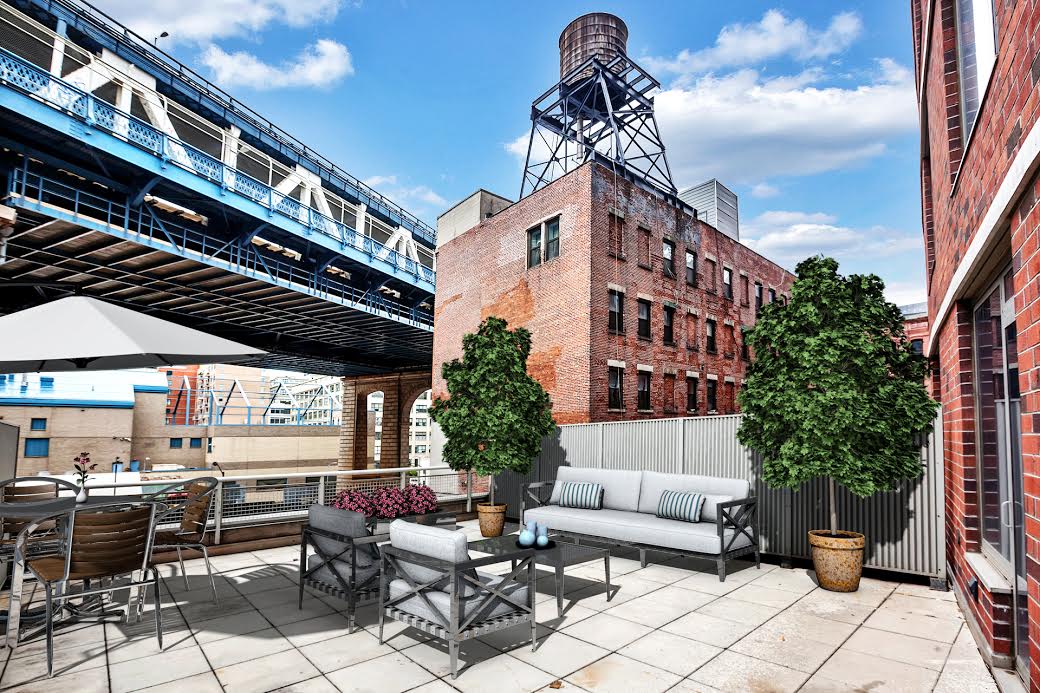
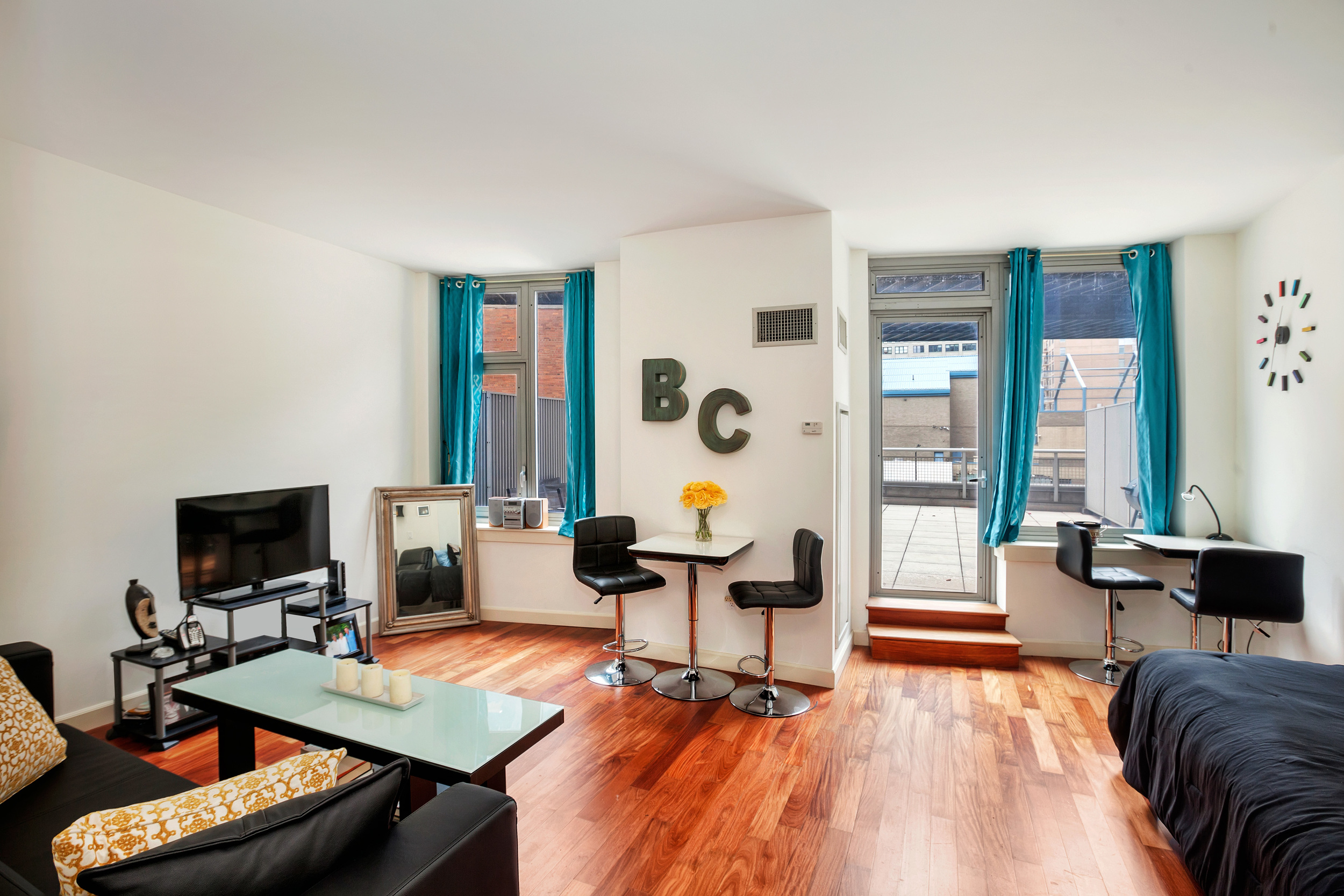



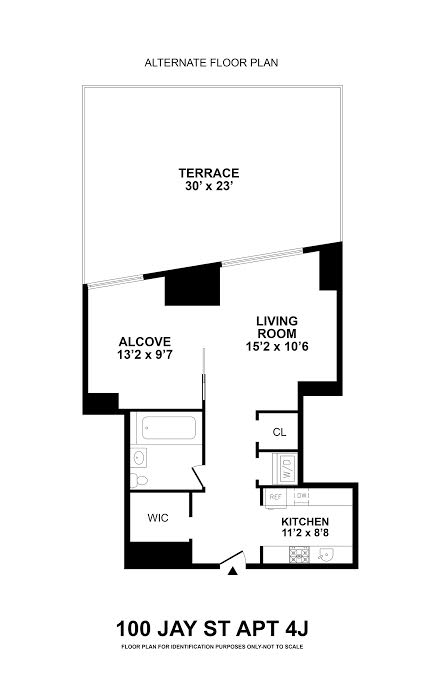
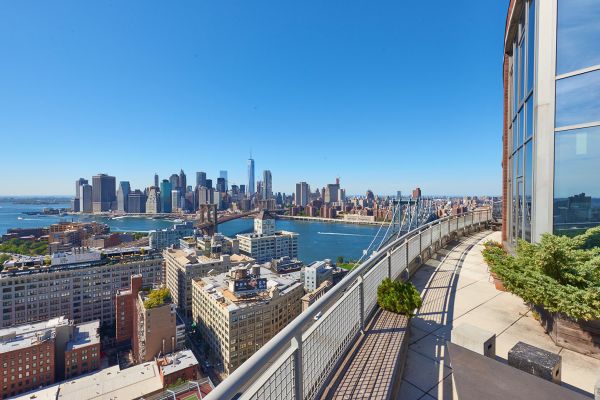
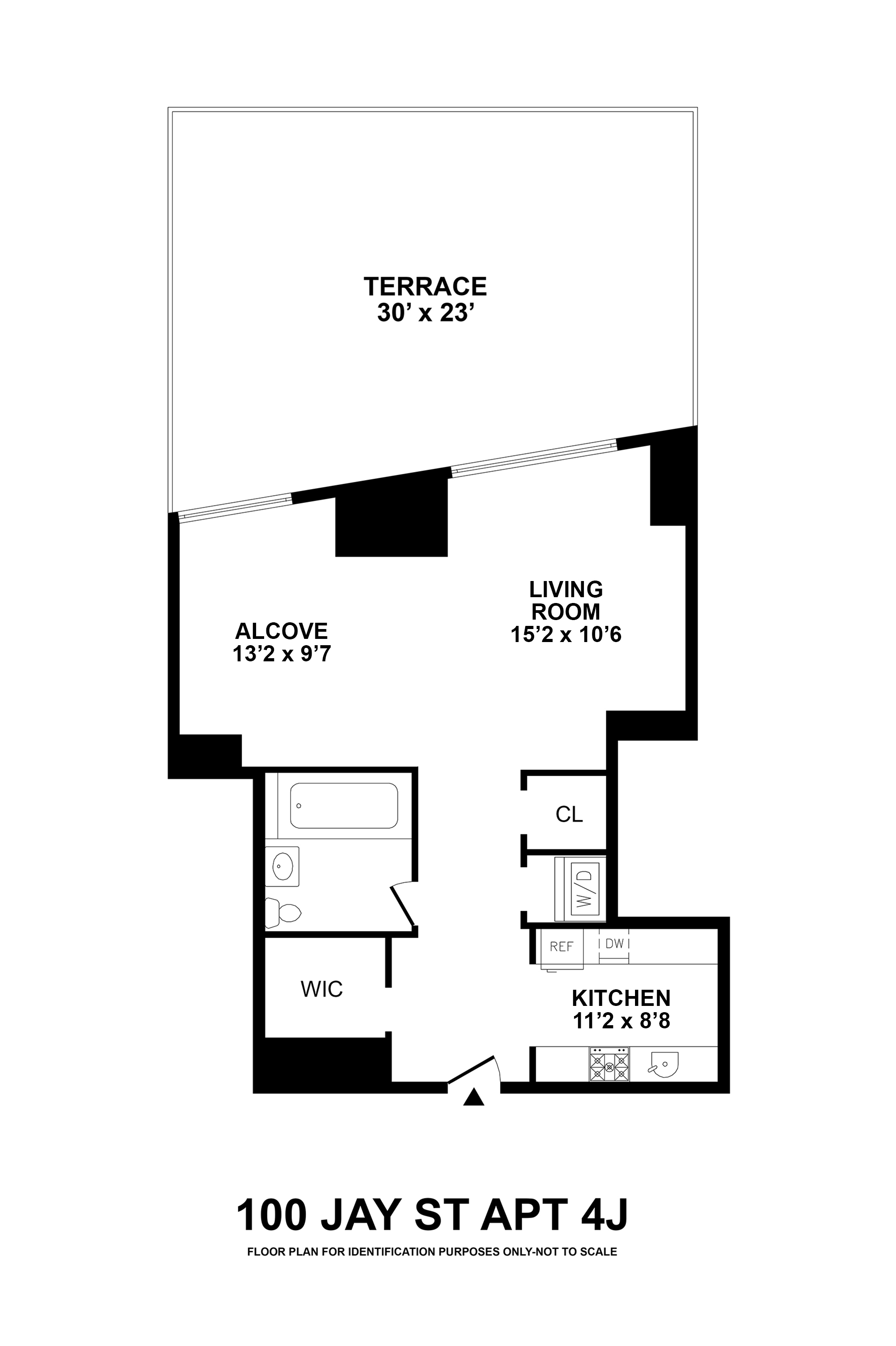
1 BED
1 BATH
$679,000
Location, separate kitchen, in-unit washer dryer, ample storage and lavish outdoor space — this fantastic studio checks literally every box on the dream home wish list. The 582-square-foot alcove layout, incredibly well suited for one-bedroom conversion, is lit by huge windows and a glass door leading to your immense 500-square-foot terrace. Here, quintessential Dumbo vistas surround you while the oversized footprint provides ample space for a full complement of patio furniture plus an urban garden to satisfy your green thumb.
Inside, dramatic interiors by Andres Escobar set a luxurious tone throughout. The kitchen is outfitted with deep-stained oak cabinets, gleaming countertops and full-sized stainless steel appliances, while the lavish bathroom features marble tilework, full bathtub and gray slate floors. With an in-unit washer-dryer and a walk-in closet, this home maximizes convenience, while high ceilings and gleaming hardwood floors amplify the home’s natural light. Enjoy tax abatement on this unit until 2023.
Residents of the J Condominium building enjoy a full menu of amenities, including full-time doorman, on-site garage, J Gym with yoga and Pilates room, children's play areas, media/screening room and a roof deck surrounded by breathtaking views of the Manhattan Skyline, East River and magnificent area bridges. Set in the heart of Dumbo’s cultural and culinary delights, 100 Jay Street is just moments away from fantastic restaurants, gourmet markets and eclectic nightlife. Open space abounds with half a dozen parks and the Brooklyn waterfront surrounding the block. Getting around is as easy as catching the F train at the next block or heading to the A/C or 2/3 trains further on. Or you can take the scenic route via the East River Ferry, docking at Brooklyn Bridge Park.
Monthly Update - May 2016
The Tides of NYC Real Estate Flow — Back and Forth
For all the doom and gloom that has been reported by this agent and most, if not all, firms, news agencies and other brokers, the national real estate market posted a 5.1 percent gain in March, according to the National Association of Realtors, back from February’s 7.1 percent drop. Preliminary reports are also telling us that gains are expected to continue through spring.
Locally, the buzz around the water cooler at real estate brokerage houses and real estate attorneys' offices is that momentum is swinging towards the seller, just a bit, and the $3 million-plus segment of the market is seeing a gradual resurgence.
But why? Did sellers finally drop their price enough to intrigue the buyers? Is the weather finally nice enough to trigger the spring sale market? Was the stock market’s bounce back to over 18,000 bringing more buying power to the table?
Yes, yes and yes.
Sellers got smart, and some got desperate coming out of the long slow winter, and reduced their prices. The spring weather always has a positive effect on the Manhattan real estate sales market, and lately, it has been gorgeous out during Sunday open houses. And who doesn’t like a robust stock market to fuel a strong real estate surge in Manhattan?
But all tides flow back to sea, and when our water recedes again, what will we find? For starters, the super-luxury market is still very sluggish, if not completely stopped, and if you haven’t looked up at the Manhattan skyline recently, there are more cranes than ever before. So, this huge tidal wave of unsold, new development property is about hit our shores. Oh yeah, and then there's the presidential election this fall, China’s big economic slow-down and the Fed's ever-looming rate hike.
For now, let us enjoy these waters, where sellers are enjoying a brisk spring and buyers are feeling confident. As for tomorrow, well, tides have a habit of changing. Back and forth.
COMPASS News:
- Compass is now in Aspen.
- Just in time for summer, we’ve rolled out our Neighborhood Guides for eight East End enclaves!
- The Compass Quarterly is here
Hoffman Team Active Sales Listings
(Plus $44 Million In Listings Coming Later This May)








Market Data in Real Time
As the only brokerage firm with a real-time Markets app, Compass is changing the way we thing about quarterly reporting. Today I am excited to introduce a new quarterly deliverable called "Manhattan Neighborhood Insights." With information taken directly from the Compass Markets App, we have highlighted overall trends and the performance of specific neighborhoods.
Download the Compass Markets app directly from the app store for more real-time market data. CLICK HERE
Chetrit May Be First Of Many Developers To Pull The Condo Plug....
The prospective residential conversion of the Sony Building at 550 Madison Avenue was once a symbol of the luxury property boom. With a $150 million penthouse planned for the top floors, it was slated to shatter Manhattan price records.
But the revelation Monday that the project had been nixed by developer the Chetrit Group – and the building sold for more than $1.3 billion – is just one of many signs that the boom that inspired it is quickly becoming a thing of the past, industry insiders told The Real Deal.
Some say that Chetrit is likely to be just one in a string of developers to ultimately pull the plug on condo projects before they even begin, in a bid to avoid falling victim to a slowdown at the top end of the residential market. In some cases, they may be forced to do so due to the lack of available condominium financing, which has dried up significantly in the past few months as some of the country’s largest banks reduce their exposure to the luxury market.
“I’m sure everybody who isn’t already moving forward on a condo is thinking again about whether this is the right time,” said finance broker Andy Singer of Singer & Bassuk. “That’s going to cut out a lot of the product that isn’t already under construction.”
And the city’s most ambitious projects are likely the most vulnerable.
“The bigger they are, the most scrutiny they’ll get,” said Leonard Steinberg, president of brokerage Compass. “Where there’s the potential for massive losses, there will be a second look taken.”
Many prominent developers are still said to be in the market for condo construction financing, including Michael Shvo’s 125 Greenwich Street, Extell Development’sCentral Park tower on West 57th Street and HFZ Capital Group’s large Chelsea project on West 18th Street. While some may manage to get financing from the banks, many may have to seek alternate sources of financing, whether it be foreign capital, crowd-funding or EB-5 financing.
“They can do everything right but if they don’t have a construction loan, it doesn’t matter,” said Robin Schneiderman of Halstead Property Development Marketing. “If that market turns off, some of these deals are just going to sit.”
But calling time on projects comes with its own set of problems for developers, who often have huge carrying costs associated with mothballing projects, and for brokers, who count on these projects selling in order to get paid.
In some ways, Chetrit and his partners, which included David Bistricer’s Clipper Equity, had the perfect fallback plan if the condo market went south. By purchasing a major office trophy such as the Sony building, the company ensured that it would still have an extremely valuable — and profitable — asset in the event that the condo market no longer appeared such a safe bet.
And Chetrit is not the only developer to have made use of a fallback strategy in recent months.
Developer Steve Witkoff announced earlier this year that he was hitting the brakes on plans to convert the Park Lane Hotel on Central Park South into luxury condos. Instead, he and his partners, who include Harry Macklowe and Douglas Elliman head Howard Lorber, have considered a renovation of the existing hotel. Since the asset is income-producing, the partners haven’t been forced to move ahead with the condo plan.
“The fact of the matter is, the velocity is not what it was,” Witkoff said in an interview with Bloomberg News in January. “Because we have a cash flow, we have the flexibility to wait.”
But not all developers can count on alternative uses for their assets. In the case of ground-up construction, developers can be left holding the bag – having to deal with loan payments and interest indefinitely – if the banks won’t fund a project.
“When the risk profile changes, they go to plan B,” said appraiser Jonathan Miller. “Chetrit was fortunate to have a Plan B, but I’m not sure everyone has one.”
Those who find themselves without a viable plan B must have the capital resources to hang in there, or risk losing their properties altogether.
Developer Ian Bruce Eichner learned that lesson the hard way – and for the second time – when the Durst Organization filed to foreclose on his prospective residential site at 1800 Park Avenue in February after he wasn’t able to secure construction financing.
In order to survive a dry lending cycle, developers have to keep their debt levels low, have patient capital partners and a cooperative interest rate environment. They should also look for ways to monetize the asset in the meantime, whether it means asking an existing tenant to remain on for another year or finding an alternate use, Singer said.
“Just because you buy real estate, doesn’t mean you have a God-given right to make a profit,” added luxury broker Donna Olshan. “Timing is everything. If the timing goes against you, you’ve got to have the power or the resources to hang in there.”
New development: a broker’s gamble
For the agents who market these projects, there are no guarantees – and a shift in a developer’s strategy can mean a big hit to their balance sheets. Elliman this week lost a potentially massive payday on a $1.8 billion sellout when Chetrit flipped the script.
In most scenarios, brokers don’t see a penny of their commissions until a unit closes. If a deal is killed, the work they put in during the pre-development phase goes for naught. The prospect makes the new development market a much scarier proposition than it was even a few months ago.
“It’s a sad day when a building gets canceled,” Steinberg said, “but the natural forces of the market are at play here. I’m sure they did a lot of work on that building and it must be devastating for them.”
Some industry veterans said many development marketers are well-prepared for these kinds of surprises and have accounted for them in their financial projections.
“I think the development marketing companies are pretty good at reading tea leaves with their clients and don’t count this as earned money,” Miller said. “They know they’re taking on risk and incurring costs that aren’t necessarily going to be reimbursed, with the assumption that the project is going to move forward. They have to understand that to play in this sandbox.”
Ultimately, a slowdown in the number of condo projects being financed may be good news for the market, Singer said.
“This is the type of change that begins to alter the cycle,” he said. “If new production slows down or stops as it seems to be doing, it gives the market a chance to absorb the existing product. Anyone who thinks they can wait three years and get a 50 percent discount on an apartment is going to be wrong.”
This Month in Real Estate History
1903: NYSE opens at 18 Broad Street
The New York Stock Exchange building, billed as the costliest building ever constructed for the securities industry, opened 113 years ago this month. The building at 18 Broad Street was estimated to cost approximately $4 million, but including the cost of land, the entire project ended up costing closer to $9 million, the New York Times reported. Measuring 109 feet by 140 feet, the trading floor was one of the largest spaces in the city, with six Corinthian columns and a skylight set into a 72-foot-high ceiling. The exterior was made of marble and the construction of the interior used close to 400,000 feet of oak, mahogany and other woods. The building at 18 Broad Street marked the 17th location for the NYSE. In 1922, the Exchange expanded to 11 Wall Street. Both that building and the main building at 18 Broad Street were designated National Historic Landmarks in 1978.
1966: Met says goodbye to old opera house
The Metropolitan Opera House held a gala to bid farewell to its old home on 39th Street and Broadway 50 years ago this month. In the fall, the Met would move to a newly constructed building in Lincoln Center. Patrons, however, bemoaned the loss of the old Met, which was set to be demolished after a preservation committee failed to raise the $8 million needed to buy and save the building. The plan was to replace it with a modern office building that would provide rental income for the opera company. During the gala, patrons took home “souvenirs” from the building, the New York Times reported. Glenn Hills, the assistant house manager, said what was left, “including trifles like the men’s room doorknobs,” would be watched carefully during a short performance of the Bolshoi ballet set to take place two weeks later. The old Met building — which had 3,625 seats and opened for the first time with a performance of Faust in 1883 — had been renovated multiple times and was even rebuilt after a fire gutted the structure in 1892. With its move to the Upper West Side, the Met won a prominent location as well as a larger space with a seating capacity of 3,800.
1983: Puck Building reopens as commercial condo
The Puck Building in Soho, which was once the world’s largest home to businesses in the lithography and publishing industry, reopened 33 years ago this month as a commercial condominium for arts and industry. The landmark 1885 building at 295 Lafayette Street underwent a three-year $8 million renovation, according to the New York Times. Owners Peter Gee, a graphic designer, and Paul Serra, a financier, intended to turn the building into an office and studio hub for photographers, film makers, advertising companies, graphic designers, architects and interior and fashion designers. They said they would seek tenants who wanted to lease more than 10,000 square feet. “It’s kind of the next logical step to make space available to architects and designers, not just residents,’’ James Polshek, dean of the Graduate School of Architecture and Planning at Columbia University, told the Times. Ultimately, the effort to sell the condos was unsuccessful. In 1986, the Puck’s owners sold the building for $19 million to an investor group that included the Kushner Companies. Jared Kushner later sought permission to build six penthouse apartments above the historic building. After initially being turned down in October 2011, Kushner’s plans were approved and the first of the six units closed in May 2014, selling for $28 million. The remainder of the building was set aside as leasable commercial office and retail space. Tenants at the Puck Building have included Spy Magazine in the 1980s and Pratt Institute in the early 2000s. The New York University’s Wagner Graduate School of Public Service currently leases 75,000 square feet of space there.
Sony Building Sold to Saudi Group, Will Remain an Office Tower
A subsidiary of Saudi investment conglomerate Olayan Group has acquired the Sony Building for $1.4 billion to $1.5 billion. The Real Deal first reported the transaction Monday. Olayan American, along with Chelsfield Group, a London-based property investment company, bought the 850,000-square-foot office tower at 550 Madison Ave. from Chetrit Group and Clipper Equity. Chelsfield will have a minority stake in the property.
Chetrit and Clipper, which bought the Sony Building for $1.1 billion in 2013, planned to convert the officer tower into luxury condos and a hotel. They expected to sell units for $4,000 a square foot. That plan has been abandoned by the new owners, who will maintain the Sony Building as a commercial space.
The electronics giant has closed its retail store at the base of the midtown building and will reopen it at its new headquarters farther south at 11 Madison Ave.
MTA Overhaul of E. 68th St. Subway Station is Up for Discussion on Tuesday
Plans to relocate the entrance to the East 86th Street subway station on the Lexington Avenue Line have angered residents there. However, proposed changes to a station down the line might be greeted more warmly. The MTA is planning to spend $70 million to renovate the 68 St-Hunter College station, DNAinfo reports, and a public hearing is coming this week. Plans include a new elevator, a new entrance on Lexington Avenue, a new stairwell at East 69th Street, and the widening and/or repair of existing stairs, some of which are quite narrow.
The changes are meant to make the 6 train station more accessible, and the station would remain open while work is done. The MTA had planned to revamp the station four years ago, but ran into opposition. The MTA presented plans to Manhattan Community Board 8 on Wednesday and hopes for a receptive crowd when it holds a public hearing this Tuesday, April 26. That will be at 2 Broadway and will start at 4 p.m.
2 Art Worlds: Flush MoMA, Struggling Met
Uptown on Thursday morning, one major museum owned up to serious financial problems. Farther downtown on Thursday afternoon, another celebrated serious financial progress.
The bad news at the Metropolitan Museum of Art — ballooning deficits, possible staff cuts and a hold on the planning of a new wing dedicated to Modern and contemporary art — stood in sharp contrast to the jubilant word from the Museum of Modern Art that the entertainment mogul David Geffen had donated $100 million toward an expansion and renovation.
But both developments spoke volumes about the current state of the art world, where Modern and contemporary art dominate the action these days — in auction houses and galleries, as well as museums. Everyone wants in, including a revered institution like the Met, which is striving to play catch-up even as it is struggling to pay the bills.
“The audience for contemporary art has grown exponentially in the last decade,” said Tom Eccles, the executive director of the Center for Curatorial Studies at Bard, adding that the sector’s attendant money and glamour make it “a honey pot” and “the Hollywood” of the art world.
The Met has stiff competition in the Modern and contemporary realm, especially at home. MoMA is expanding and renovating; the Whitney last year opened a widely acclaimed new home downtown; the Guggenheim has multiplied around the world and the New Museum has helped lead an art surge in Lower Manhattan. In addition, the new Broad Museum in Los Angeles is drawing lines around the block since it opened last fall and the San Francisco Museum of Modern Art is about to open its new building next month.
The Met has been notoriously weak in Modern and contemporary art — the art critic Holland Cotter of The New York Times once called the collection “an institutional embarrassment” — and is seen as falling short of its encyclopedic mandate, in part because its longtime former director Philippe de Montebello was wary of following trends.
His successor, Thomas P. Campbell, has made improving that area a priority, which led him to take on the Breuer building, the Whitney’s former home. “It’s a significant commitment,” he said, “but we believe it’s an important one for the programmatic health of this institution.”
The Met’s current restructuring suggests that this emphasis may have contributed to the institution’s current shortfall, which the museum says is due largely to a decline in admissions and retail revenue and an $8.5 million annual debt service on $250 million in bonds issued for infrastructure work to the main building and the Cloisters. The museum has also significantly increased its digital staff.
But the focus on building its Modern and contemporary capacity has also siphoned energy and resources away from the Met’s Fifth Avenue flagship. The museum has had to be concerned with fund-raising for Met Breuer, to cover that location’s $17 million annual operating expenses over the course of an eight-year lease as well as an estimated $15 million renovation of the building. The Met has also rebranded its entire operation at a cost of about $3 million and trained 110 staff members at the Breuer, including some new employees.
In addition, the Met has spent an undisclosed amount on the redesign of its Modern and contemporary galleries on Fifth Avenue, which calls for demolishing the existing Lila Acheson Wallace Wing in the museum’s southwest corner, increasing exhibition space and doubling the size of the Roof Garden.
The Met, which has a budget of $300 million and has carried modest shortfalls for years, is now facing a $10 million deficit.
“If we do nothing — if we just carry on — 18 months from now, at the beginning of fiscal year 2018, the deficit would be four times bigger,” said Daniel H. Weiss, the Met’s president. “That’s not O.K., so we’re going to take action to control that.”
The museum will undergo a 24-month financial overhaul that it said was likely to include staff reductions, reduced programming and a concerted effort to increase revenue in its restaurants and retail operations.
“We’ve had increasing pressure on the budget and knew that we were going to have to take actions to get it back in balance,” Mr. Campbell said.
The museum said it would also suspend the design work on the new wing until money had been raised for the project.
Photo
The southwest corner of the Metropolitan Museum of Art. It faces a $10 million deficit and says staff reductions are likely. CreditBenjamin Norman for The New York Times
Since salaries account for 70 percent of the Met’s expenses, Mr. Weiss said the museum would reduce its head count “by dozens” over the next 12 months. The Met will also freeze hiring and request voluntary buyouts, after which it may resort to layoffs.
Will the Met have to give up on its Modern and contemporary aspirations and settle for sticking to its core skill set? Can it hope to raise money for the new wing when the project is in limbo and the museum is in the middle of cutting staff?
“In a perfect world, these two events wouldn’t be coinciding,” Mr. Weiss said. “But we’ll get through these challenges.”
Meanwhile, MoMA is capitalizing on its strengths, having attracted the largess of Mr. Geffen, a leading art collector with an estimated worth of $6.8 billion, who has long supported the museum with art donations (most recently, a Mark Grotjahn sculpture) and loans (as he did for a 1996 Jasper Johns retrospective).
“When I worked in the mailroom at the William Morris agency I used to brown bag it at the sculpture garden of the Museum of Modern Art,” he said. “It’s where I developed my interest in post-World War II art.”
Mr. Geffen’s donation will go toward MoMA’s fund-raising campaign, which includes $440 million for new construction and renovation.
“These are the kind of gifts you only dream about,” said Glenn D. Lowry, MoMA’s director.
MoMA will feature a David Geffen Wing: three floors of new galleries in a residential tower designed by Jean Nouvel to the west of the museum on West 53rd Street, currently under construction. And sometime this spring, the museum’s existing fourth-floor exhibition space will be called the David Geffen Galleries.
That means Mr. Geffen’s name will now adorn another major New York arts building in perpetuity, as it does the former Avery Fisher Hall, which received a $100 million gift from him a year ago (and which generated concerns because it covered only a fifth of the projected renovation cost in exchange for perpetual naming rights).
The gift was discussed over the past six months, Mr. Lowry said, and was helped along by Mr. Geffen’s friendship with MoMA’s president, Marie-Josée Kravis.
Mr. Geffen, a California resident who established the Geffen Contemporary at the Museum of Contemporary Art in Los Angeles, dismissed the idea that he was shifting his philanthropy from one coast to another. “I spend time in both California and New York,” he said, “and I have a great affection for both places.”
MoMA has raised $650 million, including Mr. Geffen’s gift, which is unrestricted, meaning it can be directed at the museum’s discretion. “Through David’s generosity,” Mr. Lowry said, “we’re in incredible shape.”
In addition, MoMA continues to raise funds to increase its endowment and to cover operations during construction, when revenue is expected to decline because some galleries will be closed.
The expansion and renovation, designed by Diller Scofidio & Renfro, will add 50,000 square feet of galleries, giving the museum more space to present its collection and exhibitions and allowing it to improve circulation, particularly in the museum’s congested entrance.
Mr. Geffen has also donated to the Los Angeles County Museum of Art; the Spelman and Morehouse College arts education programs; the University of California at Los Angeles School of Theater, Film and Television; the University of Southern California School of Cinematic Arts; and the Geffen Playhouse.
In 2013, he contributed to the Academy of Motion Picture Arts and Sciences for the creation of the Academy Museum of Motion Pictures. His total philanthropic support to U.C.L.A. exceeds $400 million.
Mr. Geffen, who has no dependents, will ultimately leave his art collection, valued at more than $2 billion, to his foundation, which will give the pieces to institutions or sell them and donate the proceeds to his main causes: culture, medicine and education.
As for future substantial donations, Mr. Geffen suggested there may be more in store. “I intend to give away as much of my money as possible while I’m alive to things that I think are valuable,” he said. “So far, it’s a considerable amount of money.”
Correction: April 22, 2016
Because of an editing error, an earlier version of this article referred incorrectly to a gift to the former Avery Fisher Hall by David Geffen last year. Though it was for $100 million, it was not Mr. Geffen’s last donation in that amount. He later gave $100 million to U.C.L.A. to build a middle school and a high school on its campus.
NYC Approaches Green Future With New Building Emissions Standards
Mayor Bill de Blasio announced Friday that he will impose mandates on the commercial real estate sector to achieve dramatic greenhouse gas emissions among the city's building stock — by far the city's biggest contributor to global warming.
In an announcement tied to Earth Day, the mayor's office said the requirements, along with city programs and incentives, would help kickstart the mayor's goal of cutting building emissions dramatically over the next 35 years.
The mandates are a significant development for the city's real estate world. When de Blasio announced a plan two years ago to cut building emissions, he threatened mandates if private developers did not act quickly enough. After more than a year of meetings with a technical working group, the group submitted a report recommending the mandates.
“Cities that lead on climate, lead on buildings,” de Blasio said in a statement. “We’ve set bold goals as we take on climate change and a clear path to meet them. The City has been leading the way by greening our own public facilities. Now, these new initiatives will dramatically reduce emissions from New York City’s over one million buildings, while saving New Yorkers millions and creating thousands of new jobs – and we’ll be providing owners support throughout the process.”
The mayor is expected to address the announcement Friday during remarks a United Nations luncheon commemorating the signing of the Paris accord.
Among the measures announced Friday, the mayor's office will push new energy codes that will require buildings to complete cost-effective energy conservation measures; require large and mid-size building owners to repair and improve heating distribution systems within the next 10 years; require large and mid-size building owners to assess energy retrofit strategies as part of their required energy audit; and improve efficiency and information transparency in mid-sized buildings and non-residential spaces.
The city estimates the measures will reduce greenhouse gas emissions from buildings by 2.7 million metric tons — the equivalent of taking more than 560,000 cars off the road. The mandates are also expected to save building owners approximately $900 million in energy costs each year and create an estimated 1,300 direct construction-related jobs, the mayor's office said.
The move drew immediate praise form policymakers, including EPA Region II administrator Judith Enck.
“Policies that promote energy efficiency in buildings are extremely effective in driving down greenhouse gas emissions and other air pollutants. This outstanding report positions the City of New York to be a national leader in energy efficiency,” Enck said in a statement. “These policies are good for the environment, will create new jobs and reduce monthly utility bills for tenants and homeowners alike.”
Downtown's Tallest Residential Tower Completes World Trade Center–Area Transformation
In late summer, the 175-room Four Seasons Hotel at the newly built 30 Park Place is scheduled to open to guests. The 926-foot-tall, 82-story tower, which has 157 condos starting on the 40th floor, will be the tallest residential tower in downtown Manhattan, besting current record holder 70 Pine St. by 76 feet (though 70 Pine’s tip stretches to 952 feet, well beyond its 850-foot roof).
The tower caps a post-9/11 era of change for the blocks around the World Trade Center. The developer of 30 Park, Silverstein Properties, owned the lease on the former Twin Towers and surrounding buildings. Silverstein has already rebuilt 4 and 7 World Trade Center and is building towers at 2 and 3 World Trade Center.
Silverstein acquired the site for 30 Park Place in 2006. Two years later, at a breakfast event at Cipriani’s in lower Manhattan, Chairman Larry Silverstein unveiled plans for what would have been the city’s tallest residential building. But the Great Recession made financing difficult—and any luxury-condo sales less assured.
In early 2013, Silverstein finally landed $660 million in financing from Children’s Investment Fund Management LLP, and construction started soon after. Robert A.M. Stern, dean of the Yale School of Architecture, designed the limestone tower, and the Four Seasons brand will provide services to hotel guests and condo owners.
Ten units are listed on the tower’s website, with prices ranging from $3.645 million for a 1,108-square-foot one-bedroom to $32.5 million for a 6,127-square-foot, five-bedroom penthouse.
How Long Should You Wait For the Subway Before Giving Up?
To wait or not to wait, that is the question that engineer Erik Bernhardsson answered in his recent analysis of the MTA’s real-time API. In his post titled NY Subway Math he determined that if you’re in a hurry, you should only wait for a train to arrive for 11 minutes (h/t Technically). At this point, the chance that there’s a serious delay begins to rise. As he notes, “The interesting conclusion is that after about five minutes, the longer you wait, the longer you will have to wait. If you waited for 15 minutes, the median additional waiting time is another 8 minutes. But 8 minutes later if the train still hasn’t come, the median additional waiting time is now another 12 minutes.”
Bernhardsoon started looking at the data to “understand if to what extent waiting for a subway is ‘sunk cost’ vs. an investment.” He illustrates this in the graph above, where you can see how long you’re likely to wait for a train based on how long you’ve already waited. The blue line is the median, and the yellow is the 90th percentile. On a normal day, you’ll wait less than five minutes, but 11 minutes is where you’ll hit that dreaded yellow line that makes mechanical issues, sick passengers, and the like much more plausible.
The ‘Path’ to $4 billion
Architect Santiago Calatrava envisioned an elegant, bird-like PATH station for the high-profile World Trade Center site, but by some accounts what he got was anextravagant symbol of government inefficiency.
Indeed, public perception of the World Trade Center Oculus — which opened last month at the corner of Liberty and Church streets — has been largely soured by its estimated $4 billion price tag that the Port Authority has yet to back up with final numbers. But since Calatrava revealed his design for the station in 2004, the price of the project has ballooned to roughly twice its initial estimation. The overruns were caused by, among other things, the design, the complexity of building underneath the No. 1 subway line, pricey subcontracts, political disputes and Hurricane Sandy.
As costs piled onto the project, the hub’s appearance also changed. Calatrava’s vision of a bird taking flight was dramatically altered when the Bloomberg administration demanded that additional steel be added to the structure for security reasons, a change that led to a bulkier structure. For similar reasons, the hub had to swap its originally planned retractable roof for a skylight that will symbolically open only once a year on September 11. Architecture critics, in turn, have drawn unflattering comparisons of the Oculus to a skeletal stegosaurus.
But the hiccups and design criticisms have not stopped public officials from touting the station as an icon of Lower Manhattan.
“We hope that it will really upend this notion that we shouldn’t serve the public in grand ways and with great design. There’s this idea out there that grand public infrastructure is somehow inappropriate and unjustified,” Downtown Alliance President Jessica Lappin said at a New York Building Congress event in March. “It is big, it is bold, it will inspire for generations.”
An opening ceremony is scheduled for sometime in the spring, as is the opening of Westfield Group’s $1.4 billion shopping center at the hub, whose tenants include Apple, Eataly and an Épicerie Boulud. Passengers are already shuffling in and out of the station and snapping Instagram photos of its blinding white facade and interior.
After-Hours Construction Boom
It’s Saturday morning and the alarm clock is silent — but thanks to a new luxury condominium next door, there’s the deafening roar of a pile driver slamming metal deep into the ground.
For many New Yorkers, this is an increasingly familiar occurrence. According to an analysis by The Real Deal, the city’s Department of Buildings has over the past three years seen a dramatic increase in the volume of after-hour work permits — defined as construction done before 7 a.m. or after 6 p.m. on weekdays or at any hour during the weekend. The number of permits in 2015 — 59,895 — represents a 90 percent spike from 2012, when 31,569 permits were issued. While more permits went toward minor renovations than new buildings —roughly 54.4 percent compared to 32.2 percent, respectively — the list included high-profile new projects like JDS Development Group’s 111 57th Street, Extell Development Company’s Central Park Tower and Vornado Realty Corporation’s 220 Central Park South.
Measured by borough, Manhattan led the list in 2015 with 35,753 permits, followed by Brooklyn with 13,215, Queens with 6,053, the Bronx with 3,744 and Staten Island with 1,125.
Workload demands
Experts attribute the upward shift to two major dynamics occurring in the city’s construction industry: a massive amount of new building and a shortage in skilled labor. The New York Building Congress estimates that construction spending will reach $41 billion in 2016 — the highest in the city’s history. And although employment in the industry is also on the rise (the Building Congress expects jobs to reach 131,800 in 2017), it isn’t growing fast enough to meet demand.
Under these pressure-cooker circumstances, some say that contractors and developers are exploiting the city’s after-work permitting system to get projects done as expeditiously as possible.
“I think it’s because there’s a lot of construction work, and the after-hour permits are needed because there’s actually a shortage of construction personnel,” said Lance Franklin, CEO of Manhattan-based Triton Construction. “There’s a spike in after-hours work to make up for schedule delays, the lack of available manpower and for trying to meet certain deadlines.”
Franklin said that his firm seeks these types of variances primarily for work on new buildings.
The high number of permits granted for renovations stems from the unpredictability of such projects, he said. Discoveries like an error in a floor plan or, say, asbestos behind a wall can create unforeseen delays and knock a project off schedule. “When you open something up, you never know what you’re going to find,” Franklin said. “The schedules are more challenging. You’re finding things that you’re not expecting.”
Similarly, an executive of another construction company, who asked not to be identified, said that the permits are not difficult to obtain and they go a long way in helping developers stay on schedule.
“It’s what the city allows, so you try to take advantage of what the city allows,” he said.
Murky reasons
In every borough except Staten Island, the top reason listed in 2015 was public safety. In Manhattan, 81 percent of the permits issued were for this reason.
According to DOB representatives, the agency issues permits for five reasons: public safety, emergency work, undue hardship, construction that will cause minimal noise and city construction projects. However, based on TRD’s examination of hundreds of after-hours permits, the explanations provided are sometimes limited and don’t always spell out how the work qualifies as an act of public safety, often only indicating issues such as“traffic congestion” or “business hours.”
Alex Schnell, a DOB spokesman, said that permits issued for public safety serve as a “proactive safety measure” for work that “can’t be performed or would cause an unreasonable burden” during the weekday due to high levels of traffic. He noted that permits are a privilege that can be revoked.
After a spate of press and noise complaints, the DOB recently launched a “comprehensive evaluation” of how after-hour variances are issued. Schnell said the agency wanted to see if there were “alternative options that could be implemented without creating a danger to the public.”
When asked if the study was a response to the high volume of permits granted, Schnell would only say that it was an issue that DOB Commissioner Rick Chandler wanted to look into.
Apart from time, money is an obvious factor. Richard Lambeck, a clinical associate professor and chair of the construction management department at New York University’s Schack Institute of Real Estate, said the increase in after-hours permits highlights the growing prevalence of non-union construction in the city. Non-union workers, who by some estimates work on 50 percent of new construction in the city, are typically able to work nights and weekends without requiring overtime. In those cases, after-hours permits provide a less expensive avenue to getting the work done more quickly, he said. “The volume of work that is going on in New York City is just tremendous right now,” Lambeck said. “It’s using a lot of labor, and it’s using a lot of material, and the problem with this kind of environment is that you have trouble getting the workers you need to get it done.”
Cash cow
For the city, the after-hours permits have provided a growing stream of income. Applicants pay $80 per workday, plus an initial filing fee, which ranges from $100 (for one to three days of work) to $500 for 14 days. The city raked in $25.3 million in after-hour application fees in 2015, compared to $14 million in 2012, according to the DOB.
Over the last year, after-hours construction has received increasing attention. In 2014, Council Member Rosie Mendez, whose district includes the Lower East Side, the East Village and Gramercy Park, introduced a bill to set new standards for the permits, but the measure never made it out of committee. The bill is currently being amended and will likely be reintroduced before the end of the year. Council Member Dan Garodnick, one of the bill’s sponsors, said he and other council members are awaiting the results of the DOB’s study. “Nearly every Manhattan elected official called on the DOB to put down its rubber stamp and to start cracking down on unreasonable and illegal after-hours construction,” Garodnick said in a statement. “Developers feel entitled to these permits because of lax oversight and enforcement, and the results are quite painful for our communities.”
New Rental Listing - 334 West 85th Street, Unit 3D
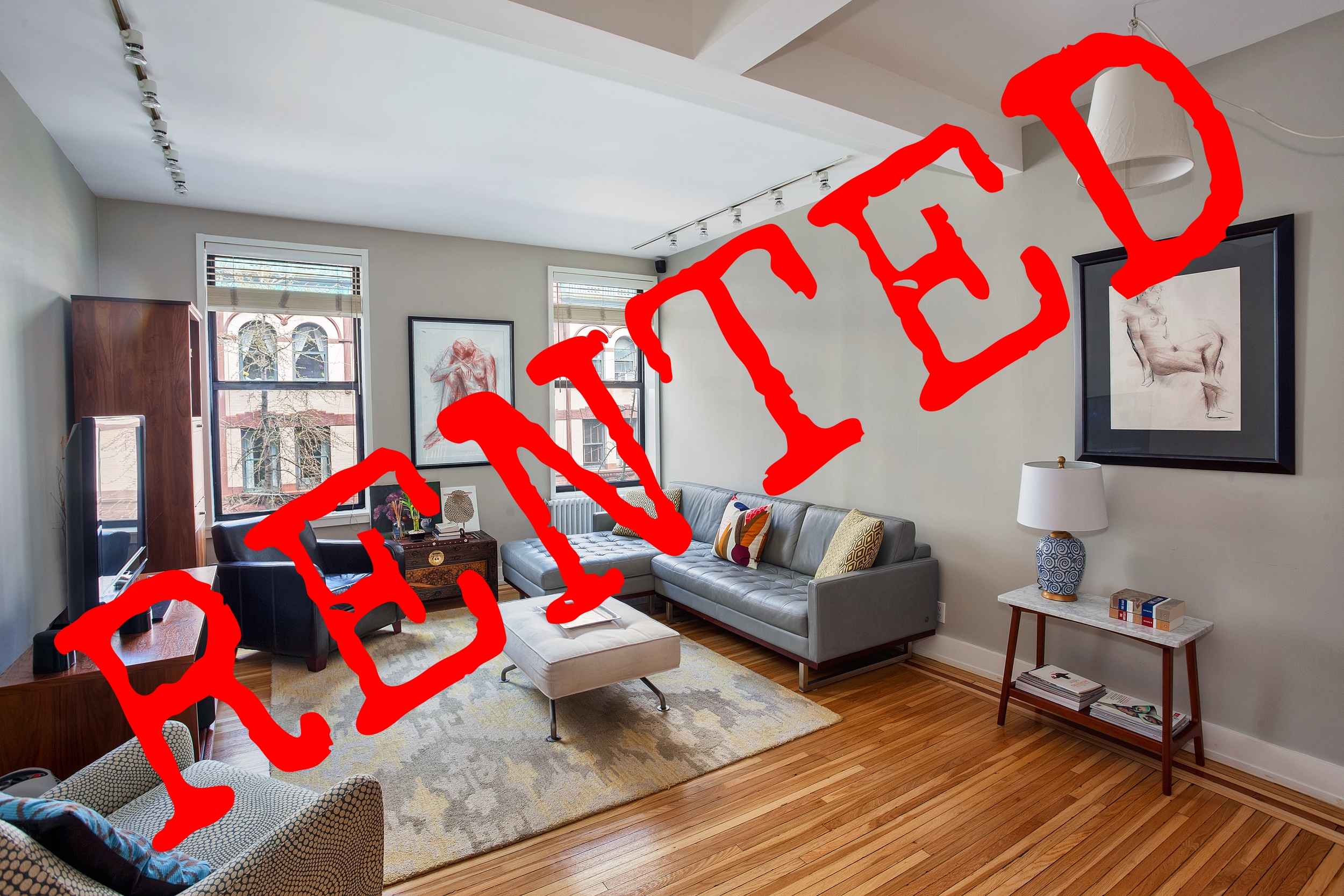

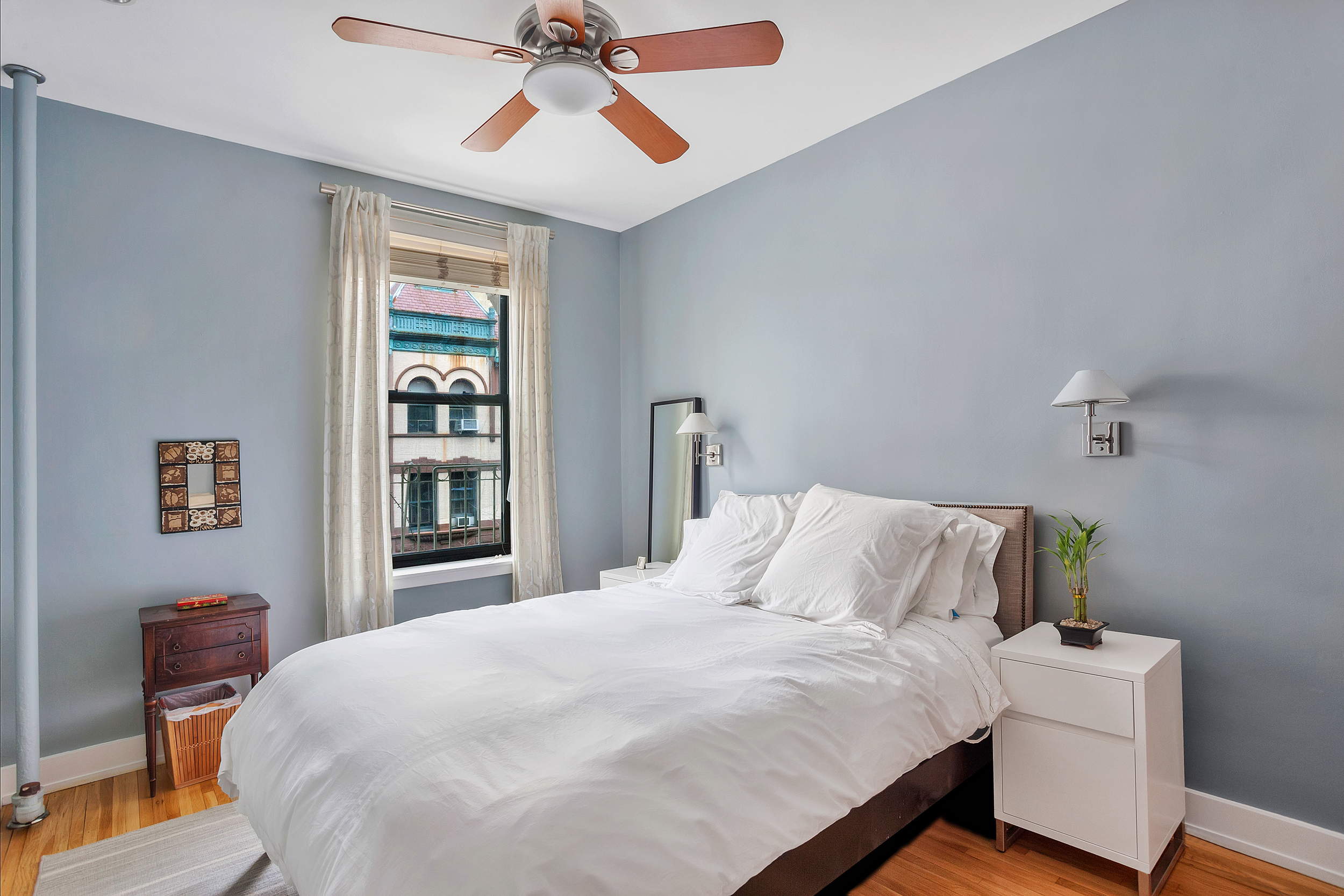
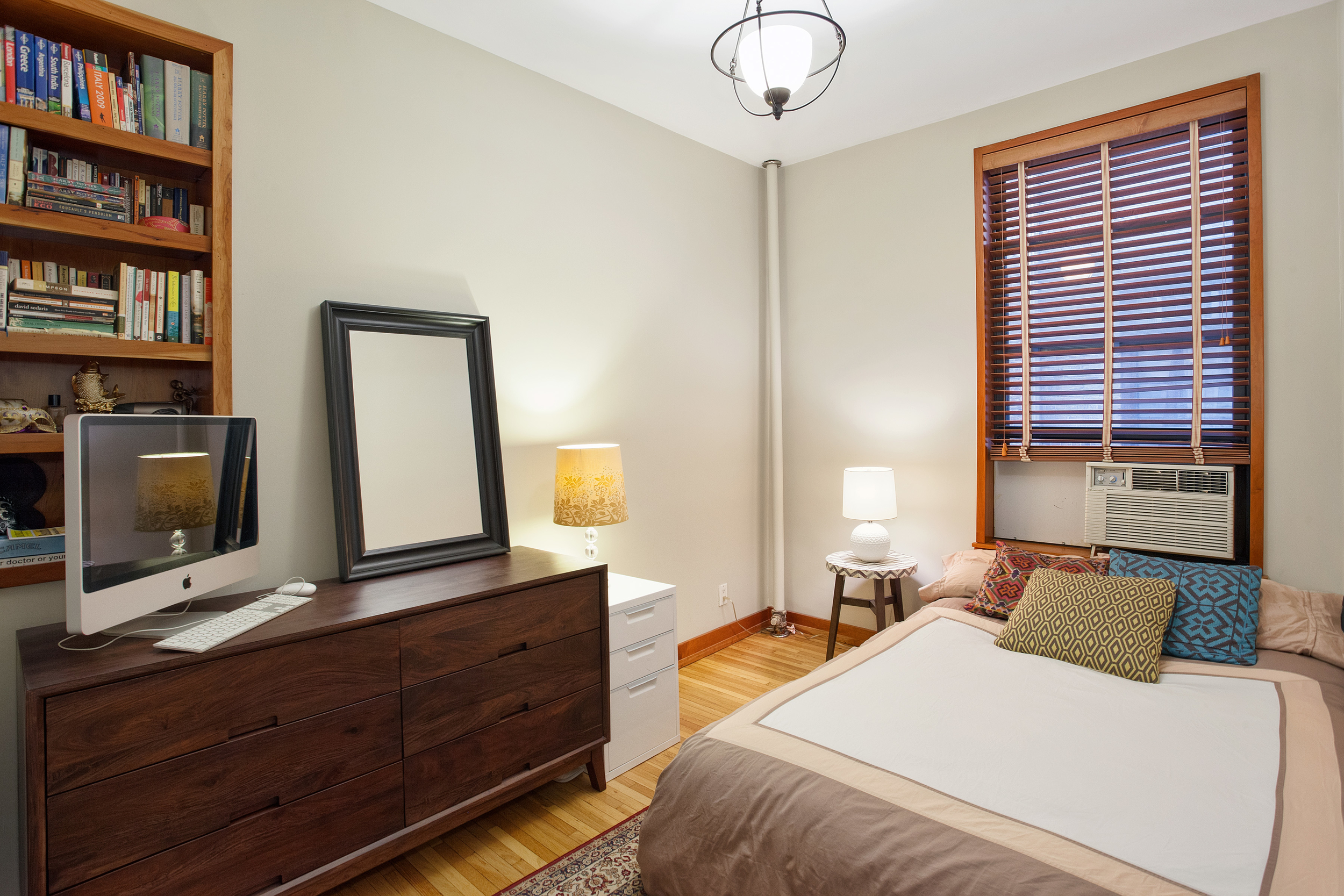

Beautifully renovated 2 BR with plenty of storage. Kitchen boasts marble countertops, SubZero fridge, Garland Chefs stove, Bosch dishwasher and built-in wine cooler. Master suite features sink and large dressing area w/ custom-built storage and closets. Tiled bathroom with glass sink and stall shower. Northern light exposure.Private storage unit included. Live-in super. Elevator building and Laundry on site. Easy application process. Available for occupancy June 1st. nwnew
MetroCards will soon be a thing of the past
The days of being asked to swipe again and again at the turnstile could soon be ancient history — as the MTA has begun seeking proposals that would move the subway system toward the post-MetroCard era.
The MTA will release paperwork on Wednesday asking companies to submit proposals for ways of paying for rides with contactless media, such as smart cards or mobile devices.
They are hoping that such a new system, similar to payment methods already used in taxi cabs and stores, in which customers only have to swipe their phones, will make MetroCards as obsolete at subway tokens.
“Currently, the MTA is basically in the business of creating its own currency, which is very expensive,” said Riders Alliance executive director John Raskin. “The more it can shift that burden to Mastercard and Visa,the less the MTA has to worry about and the better it will be for riders.”
The agency wants interested companies to submit their vision of how riders will pay the fare by June 23. There was no talk of what accommodations would be made for people with out smart phones or credit cards.
It will take quite a while before the new payment system is ready.
Even though the switchover is supposed to be a part of the MTA’s 2015-2019 capital program, the new method won’t be up and running until at least 2021.
Keith Olbermann Lists Trump Palace Condo, Takes Swipe at Trump Campaign
In March, Keith Olbermann wrote an op-ed in the Washington Post announcing plans to move out of his Trump Palace apartment in New York City due to his opposition to the building’s developer, Republican presidential candidate Donald J. Trump. Now, the liberal news and sports commentator is following through, listing the roughly 1,750-square-foot condo for $3.9 million.
The asking price is significantly less than the $4.2 million Mr. Olbermann paid for the apartment in 2007. He said he bought it at around the height of the market and would be disappointed to lose money on the sale, but added he feels it is worth it. “I feel 20 pounds lighter since I left,” said Mr. Olbermann, who moved out of the apartment in March. As a longtime political commentator on MSNBC, Mr. Olbermann was known for his criticism of right-wing politicians.
Mr. Trump said in an email that Mr. Olbermann “is just trying to use ‘Trump’ to get publicity and stay relevant. The prices of Trump apartments are today, the highest they’ve been. When people find out he is leaving Trump Palace, prices will probably go up.”
The apartment is on the 40th floor of Trump Palace, a 55-story tower that was developed by Mr. Trump in the early 1990s and is managed by the Trump Organization, according toGinger Shukrun of Town Residential, who is listing the property with colleague Wendy Jodel. With views of the Empire State Building, Central Park and the George Washington Bridge, the apartment has two bedrooms and a family room that could be converted to a third bedroom, Ms. Shukrun said. The apartment has three balconies and comes with a 71-square-foot storage room in the basement.
Mr. Olbermann said his unit is “a great apartment,” but leaving the building made him feel “less morally icky.” He added that if it wasn’t a Trump building, he never would have moved. “If they had changed the name of it to something more positive like Ebola Palace I would have happily stayed,” he said. He said he has found another home in Manhattan, but declined to identify which building.
Trump Palace is a full-service building with a 24-hour doorman, concierge, garage, gym, and outdoor children’s play area, Ms. Shukrun said.

























